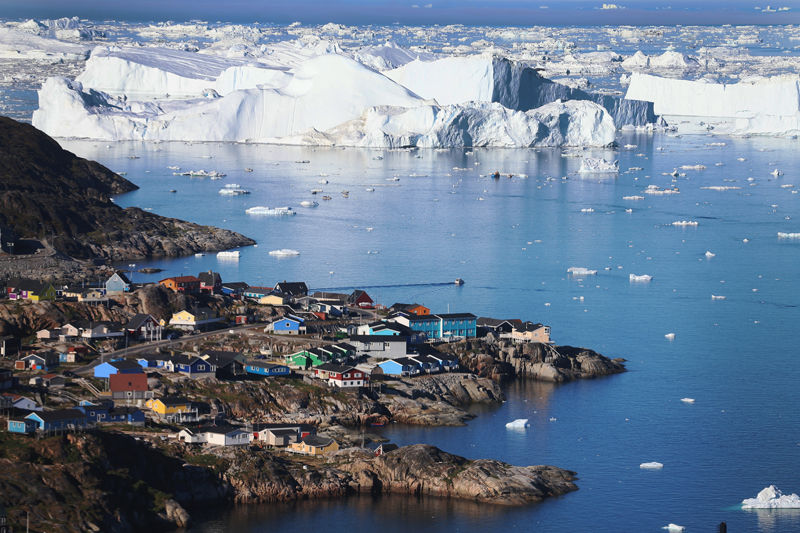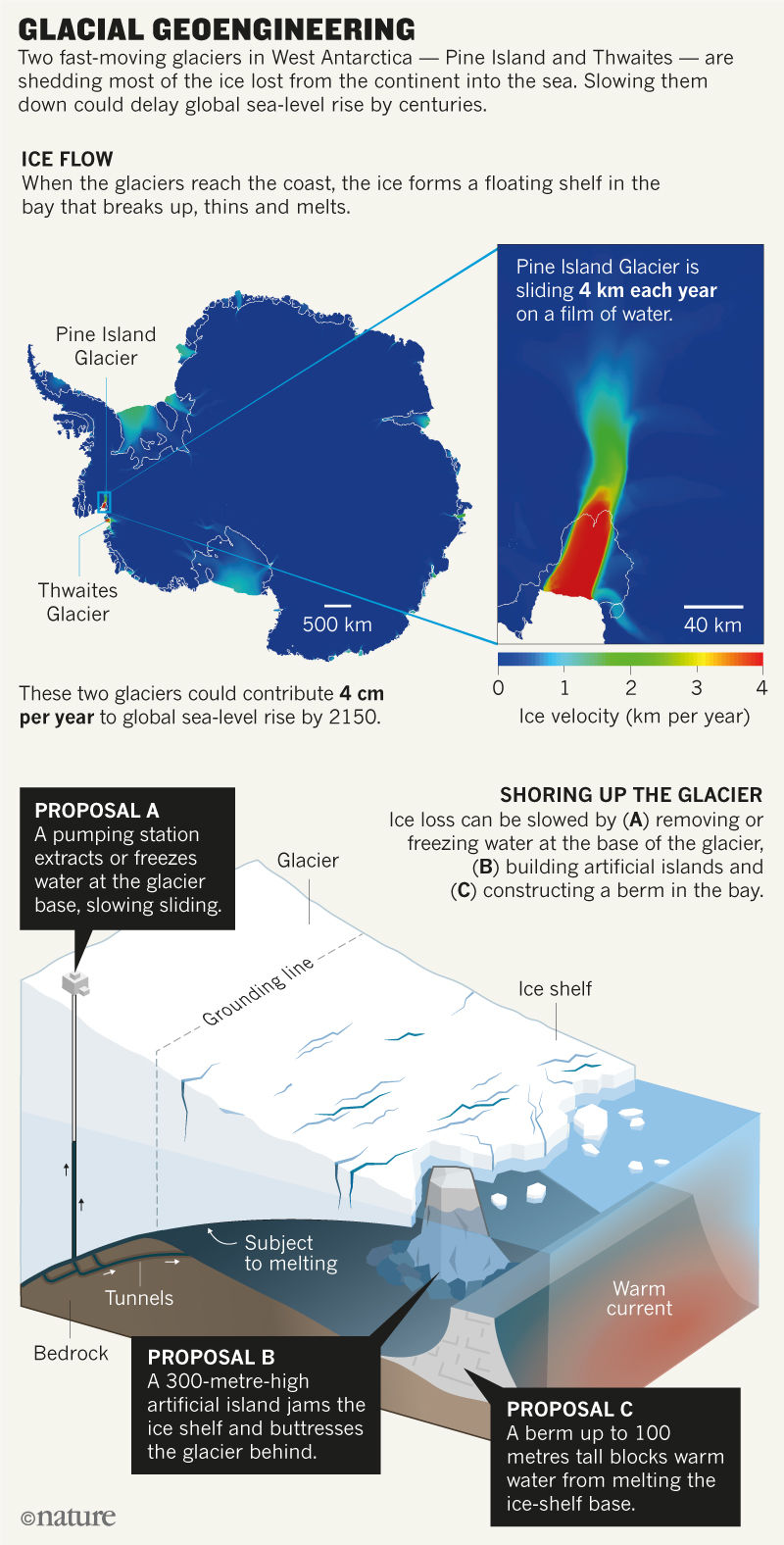Geoengineer Polar Glaciers to Slow Sea-level Rise
Stalling the fastest flows of ice into the oceans would buy us a few centuries to deal with climate change and protect coasts, argue John C. Moore and colleagues.

From Nature (International Journal of Science) 14. March 2018:
The ice sheets of Greenland and Antarctica will contribute more to sea-level rise this century than any other source. By mid-century, a 2 °C increase is predicted1 to swell the global oceans by around 20 centimetres, on average. By 2100, most large coastal cities will face sea levels that are more than a metre higher than currently.
If nothing is done, 0.5–5% of the world’s population will be flooded each year after 21002. For example, a 0.5-metre rise in Guangzhou, China, would displace more than 1 million people; a 2-metre rise would affect more than 2 million1. Without coastal protection, the global cost of damages could reach US$50 trillion a year. Sea walls and flood defences cost tens of billions of dollars a year to construct and maintain2.
At this price, geoengineering is competitive. For example, building an artificial island to host Hong Kong’s international airport, which added 1% to the city’s land area, cost more than $20 billion. China’s Three Gorges Dam, which spans the Yangtze River to control floods and generate power, is thought to have cost about $33 billion.
To stimulate discussion, we explore three ways to delay the loss of ice sheets.
1. Block warm water
2. Support ice shelves
3. Dry subglacial streams

Feasibility trials
Glaciologists and engineers should establish the scientific viability of these projects through fieldwork and computer modelling. The glaciers concerned need extensive study, including mapping the geomorphology of their beds and the rates at which they are melting. More observations are needed of the North Atlantic’s flow onto the Greenland shelf. Climate models need to do a better job of simulating the Southern Ocean.
Potential risks, especially to local ecosystems, need careful analysis. In our view, however, the greatest risk is doing nothing — or if the interventions don’t work. The impacts of construction would be dwarfed locally by the effects of the ice sheet’s collapse, and globally by rapid sea-level rise. Unexpected consequences might arise. For instance, if water at a glacier’s base is trapped in pockets, some parts of the glacier or ice stream might speed up rather than slow down.
Geoengineering of glaciers will not mitigate global warming from greenhouse gases. The fate of the ice sheets will depend on how quickly we can reduce emissions. If emissions peak soon, it should be possible to preserve the ice sheets until they are again viable. If they keep rising, the aim will be to manage the collapse of the ice sheets to smooth the rate of sea-level rise and ease adaptation.
Read Full Story HERE




